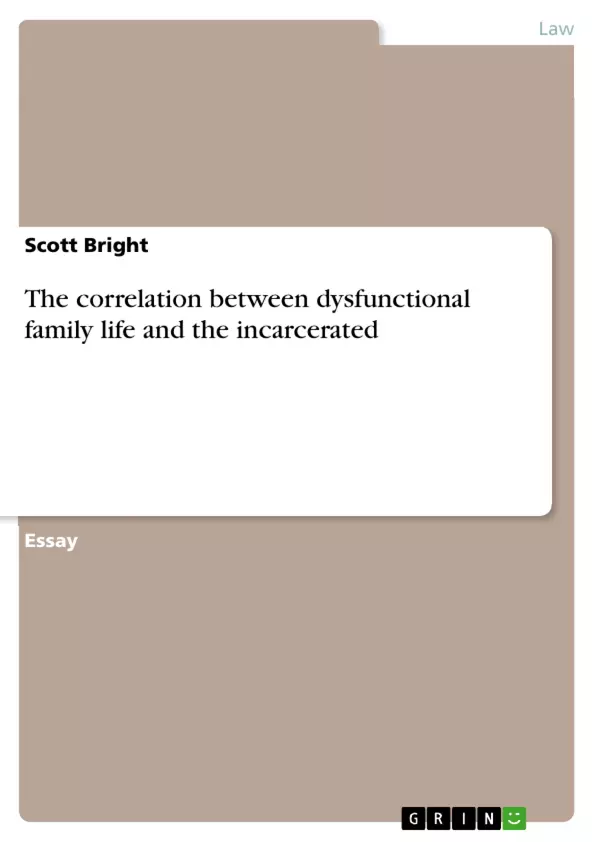A brief summary of the Developmental Life Course theory expresses the impact the environment of a person has on them. The impact the family has on a person can influence them for a good life or a criminal one. The family began to disintegrate ten years before the divorce rates and prison rate skyrocketed. This paper discusses the correlation between the two and the impact the family has in relation to influencing a person to crime or a way from crime.
This paper ranges from before the implementation of the No Fault Divorce propositions. This paper will prove the implementation of the No Fault Divorce propositions are directly related to the increase in crime and the disintegration of the traditional family model.
Inhaltsverzeichnis (Table of Contents)
- Abstract
- The Family Unit
- The Importance of the Family
- The Disintegration of the Family
- The No Fault Divorce
- Conclusion
Zielsetzung und Themenschwerpunkte (Objectives and Key Themes)
This paper examines the relationship between the disintegration of the traditional family model and the rising crime rate in the United States. It argues that the implementation of No Fault Divorce propositions, which allowed for easier divorce proceedings, has significantly contributed to the breakdown of families and, consequently, the increase in crime.
- The impact of the family environment on individual development
- The correlation between divorce rates and crime rates
- The influence of family structure on children's behavior and development
- The role of parental responsibility and involvement in child development
- The consequences of absent fathers for children's well-being and societal outcomes
Zusammenfassung der Kapitel (Chapter Summaries)
The paper begins by defining the traditional family unit and emphasizing its importance in child development. It then explores the historical context of family disintegration, highlighting the rise in divorce rates and its potential impact on crime. The author discusses the implementation of No Fault Divorce in California and its subsequent spread across the United States, analyzing the significant increase in divorce rates following its adoption.
The paper further examines the impact of absent fathers on children's emotional, cognitive, and social development, citing research that demonstrates the positive influence of involved fathers on various aspects of children's lives. The author also explores the connection between economic circumstances, single-parent households, and crime rates, highlighting the vulnerability of children raised in such environments.
Schlüsselwörter (Keywords)
This paper focuses on the relationship between family structure, divorce, crime rates, and child development. Key themes include the impact of the family environment on individual development, the role of parental responsibility and involvement, the consequences of absent fathers, and the influence of social and economic factors on crime rates. The paper draws on research findings and historical data to support its arguments, emphasizing the importance of strong family units for the well-being of individuals and society as a whole.
- Quote paper
- Scott Bright (Author), 2016, The correlation between dysfunctional family life and the incarcerated, Munich, GRIN Verlag, https://www.grin.com/document/322521



